Federal Election Resources
New Federal Election resources coming soon
We will be adding new Member resources, including template letters and suggested social media content to help you advocate for your community to local MPs, political parties and candidates soon.
When is the next federal election?
The next federal election must take place on or before 27 September 2025.
The exact timing is a matter of judgement for the Albanese Government, influenced by the constitutional and legislative rules that outline the electoral process.
Key factors influencing the election date include the scheduling of major state and territory elections. If the government opts for a full three-year term, it may wait until after the Western Australian election in March 2025, potentially scheduling the federal election mid-year.
With timing uncertain, it’s crucial for the ACCHO sector to begin advocacy efforts now to ensure its needs are clearly communicated to MPs and political parties.
This guide is designed to support you in this process.
For more on the constitutional and legislative factors in setting election dates, check out So When is the Next Federal Election? A Quick Guide published by the Parliament of Australia.
Why advocate to political parties?
Data and evidence clearly show that Indigenous Queenslanders experience significantly poorer health outcomes compared to other Australians, with large life expectancy gaps for both males and females in Queensland.
Political parties and governments cannot act as powerless observers to this inequity.
QAIHC’s election advocacy will be grounded by the priorities in our Blueprint 2.0, our 10-year strategic vision to build a strong sector and strong health system for Indigenous Queenslanders.
We will advocate to all major political parties to support practical evidence-based programs and investments that address the needs of Indigenous people and communities who both deserve and strive for meaningful change.
We encourage your Member service to advocate for what is most important to you locally. To support you in this effort, we’ve developed some key points you can incorporate in your messages. We have also prepared template letters and social media content your can adapt to suit your service.
What are we are advocating for?
ACCHOs must be recognised and funded as integral participants in our complex federated health system. This requires:
- Fair and transparent funding arrangements that respond to evidence of need.
- Governance arrangements that give the ACCHO sector a seat at the table and a substantial role in shaping health service planning, funding and provision.
- Direct actions to address medication shortages and improve access to pharmacists in ACCHOs.
The National Agreement on Closing the Gap committed all Australian governments to tangible actions to give effect to four priority reforms:
- Establishing formal partnerships and shared decision-making
- Strengthening the community-controlled sector
- Transforming government organisations to better serve Indigenous communities
- Sharing access to data and information at a regional level.
Without genuine commitment to shared decision-making with communities, governments will continue to make investments that do not deliver effective health outcomes .
To improve the health and wellbeing of Indigenous Australians, QAIHC believes tactical action is required to refocus our current Indigenous health investment on practical, community-driven solutions.
These practical actions are the change Indigenous Queenslanders and communities want. Not the overly complex, often tokenistic investments in “co-design” and “genuine partnership” that have done so little to close the gap.
Queensland’s Indigenous communities are asking for:
- Local and regional place-based solutions with real investments that empower Indigenous communities directly.
- Shared decision-making with Indigenous communities, empowering them to identify their own priorities, and the solutions required to meet the needs of their communities.
- More effective, equitable investments guided by clear evidence of need and supported by publicly accessible data-dashboards.
We can use the National Health Reform Agenda to incentivise partnerships between our hospitals and the Aboriginal and Torres Strait Islander community-controlled health organisations (ACCHOs). Some hospital-delivered services — both in the community and at home — could be delivered by ACCHOs, where culturally appropriate care is prioritised.
Investments in Hospital and Health Services to develop First Nations workforce capability haven't achieved enough. Direct investment in community-controlled services and programs would strengthen local expertise and better meet community needs.
In February this year, the National Productivity Commission reported that governments — including the Queensland Government — have not adequately progressed these commitments (Study Report — Closing the Gap review — Productivity Commission (pc.gov.au)).
The Closing the Gap Agreement has been in place since July 2020; however, there is still no truly robust mechanisms or data in place to measure or report on progress. Achieving the 17 socio-economic targets requires urgent attention to implementing and rigorously measuring progress against across the Priority Reform areas at all levels of government.







